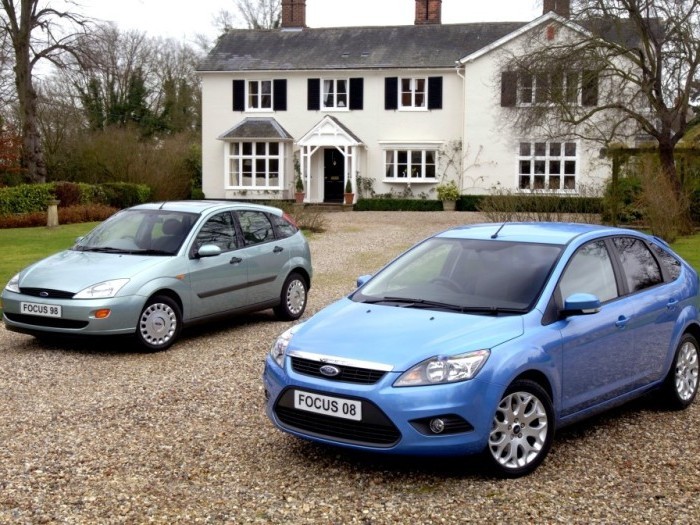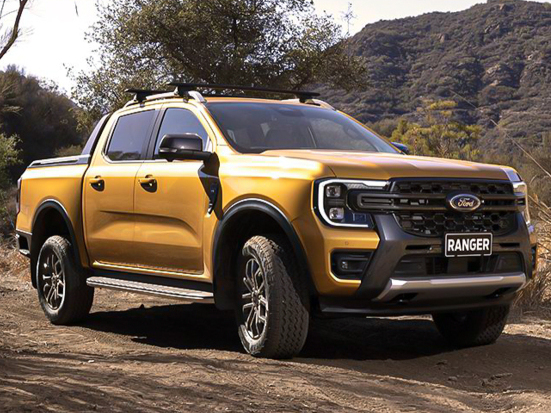Q
What fuel is the best choice for Ford Focus?
The 2017 Ford Focus Sedan 1.5-liter EcoBoost Titanium Plus Edition runs on fuel. Generally speaking, using the fuel recommended by the vehicle manufacturer is the best choice. The gasoline specially formulated by Ford for its vehicles is designed to optimize engine performance, improve fuel efficiency, and control exhaust emissions.
As stipulated in the vehicle user manual, using regular unleaded gasoline with an appropriate octane rating can ensure the smooth operation of the engine. High-quality gasoline purchased from reputable gas stations also helps maintain the health of the engine, as this gasoline contains additives that prevent the formation of carbon deposits in the engine and fuel system. Long-term use of poor-quality fuel may lead to a decline in engine performance, a reduction in fuel economy, and may cause engine malfunctions.
Special Disclaimer: This content is published by users and does not represent the views or position of PCauto.
Related Q&A
Q
What's the fuel consumption of Ford Focus?
The official combined fuel consumption of the 2017 Ford Focus 4-door sedan with a 1.5-liter EcoBoost engine, Titanium Plus Edition, is 5.6 liters per 100 kilometers. This figure is measured under specific test conditions stipulated by the manufacturer. However, in real-world driving, the actual fuel consumption can vary due to multiple factors.
For instance, driving style has a significant impact on fuel consumption. An aggressive driving style with frequent rapid acceleration and hard braking usually leads to higher fuel consumption, while smooth and constant-speed driving helps save fuel. Road conditions also play a role. Compared with driving on a flat highway with light traffic, driving on hills or in heavy traffic typically increases fuel consumption.
In addition, vehicle load, tire pressure, and the use of accessories such as the air - conditioning system can all affect the actual fuel consumption of the Ford Focus.
Q
What's the service life of Ford Focus' petrol engine?
The service life of the gasoline engine in the Ford Focus can be different. Generally speaking, if properly maintained, the service life of gasoline engine can last for more than 150,000 to 200,000 miles (about 240,000 to 320,000 kilometers) or even longer. The Ford Focus 1.5 EcoBoost Titanium+ is equipped with a 1498 - cc gasoline engine.
Regular oil changes are crucial because fresh oil lubricates the engine components, reducing friction and wear. Replacing filters, such as the air filter and fuel filter, also enables the engine to take in clean air and get the proper fuel mixture. Timely replacement of belts and hoses that age over time helps prevent unexpected breakdowns. Maintaining good driving habits is also important. Aggressive driving with sudden acceleration and hard braking will damage the engine, while smooth driving can extend the engine's service life. Additionally, following the manufacturer's maintenance schedule for the engine (for the Ford Focus, it might be maintenance at regular intervals of mileage or time) can ensure the engine stays in good working condition over the long term.
Q
Which one is better, Honda Civic or Ford Focus?
The Honda Civic and the Ford Focus each have their own advantages, making it difficult to simply judge which one is better. In terms of appearance, the front end of the Ford Focus has a dynamic design. Its large - sized aluminum alloy wheels are well - matched with the sporty taillight group, giving the car an overall fashionable and tech - savvy look. On the other hand, the Honda Civic may have a more simple and smooth shape.
When it comes to the interior, the Focus' 13.2 - inch floating central control screen creates an excellent technological atmosphere. It also comes with a large - sized sunroof, automatic air - conditioning and other complete configurations. The Civic's interior perhaps focuses more on the balance between comfort and practicality.
In terms of power, the Focus offers a variety of power options, including different turbocharged engines, providing plenty of driving fun. The Civic's power performance can also meet the needs of daily driving, and it may perform well in terms of fuel economy.
The prices of the two cars also vary depending on the specific models and configurations. It is recommended that you go to a dealership to test - drive these two models in person, experience their actual driving feelings, and then select the most suitable model for yourself based on factors such as your budget and your preferences for the appearance and interior.
Q
Is Ford Focus smaller than Corolla?
The 2017 Ford Focus Sedan 1.5 EcoBoost Titanium+ measures 4,534mm in length, 1,823mm in width, and 1,484mm in height, with a wheelbase of 2,648mm. The dimensions of the Corolla vary depending on the version and year. Generally, its length ranges from 4,300mm to 4,600mm, width from 1,700mm to 1,800mm, height from 1,450mm to 1,500mm, and wheelbase typically from 2,600mm to 2,700mm. As we can see, the Ford Focus is bigger than the common Corolla in length, width, height, and also longer in wheelbase.
However, the interior space of a car isn't solely determined by its exterior dimensions. Factors such as the in - car layout design also play a role in the actual space experience. Moreover, there are differences in the dimensions among different Corolla models. A detailed comparison requires the accurate parameters of the actual models. But when compared with the above - mentioned models, the Ford Focus has larger overall dimensions.
Q
Which one is better, Mazda 3 or Ford Focus?
Both Mazda 3 and Ford Focus have their own advantages, so which one is better depends on individual needs and preferences. In terms of price, if you have a limited budget, the Focus might be more suitable as it is relatively affordable. When it comes to configuration, the Mazda 3 has more abundant safety features. Even the base - model is equipped with a tire pressure monitoring system and a vehicle stability control system. Regarding power performance, the Focus is powered by a 1.5 - liter naturally - aspirated engine, while the Mazda 3 offers a choice between a 1.5L and a 1.4T engine, and the 1.4T engine provides stronger power. In terms of exterior design, the Focus has a more masculine look, while the Mazda 3 is more appealing to women. Moreover, the seams on the Mazda 3's center console are more delicate. In terms of space, some testers think that the Mazda 3 has a slight edge in headroom and legroom. All in all, if you focus on price and practicality, the Focus is a good option. However, if you prefer rich configurations and strong power, the Mazda 3 may be a better choice.
Q
What is the fuel economy of Ford Focus?
The official fuel consumption of the 2017 Ford Focus sedan 1.5-liter EcoBoost Titanium Plus Edition is 5.6 liters per 100 kilometers. This figure represents the combined fuel consumption under standard test conditions. In real-world driving, the fuel consumption may vary, which can be affected by factors such as driving style, road conditions, and vehicle load. For example, an aggressive driving style with rapid acceleration and hard braking may increase fuel consumption, while a smoother and more stable driving style may make the actual fuel consumption closer to the official data. Additionally, using features such as the air conditioner and having an excessive vehicle load can also affect the car's fuel consumption. The Focus's fuel consumption of 5.6 liters per 100 kilometers makes it a relatively fuel-efficient model in the compact car segment, helping car owners reduce their vehicle usage costs.
Q
Which model of Ford Focus is the best?
As the criteria for "the best" vary from different people, so it's quite difficult to directly determine which model is the best. Take the 2017 Ford Focus Sedan 1.5 EcoBoost Titanium+ as an example. It is equipped with rich configurations. In terms of power, the 1.5 - liter engine has a maximum horsepower of 182PS. The maximum speed can reach 222km/h, and it can accelerate from 0 to 100km/h in 8.6 seconds. Its power output has certain advantages among cars in the same class. Regarding safety features, it is standard - equipped with a series of safety systems such as ABS anti - lock brakes, vehicle stability control, and lane - change assist, and also has six airbags to comprehensively ensure the safety of drivers and passengers. There are also quite a few comfort features inside the car, like the dual - zone automatic air - conditioning in the front row and Sony speakers. However, if consumers pay more attention to fuel economy, its official combined fuel consumption of 5.6L/100km is quite good. If they prefer space, its 421L trunk volume is just average. So, the best model depends on individual's preferences.
Q
Is Ford Focus a small or mid-size car?
The Ford Focus is a small car, specifically a C-segment or compact sedan. It has a body length of 4,534 millimeters, a width of 1,823 millimeters, a height of 1,484 millimeters, and a wheelbase of 2,648 millimeters. These dimensions are typical specifications for a compact sedan. In the automotive classification, compared with mid-size or large vehicles, compact sedans are known for their relatively small size, which makes them easier to be driven in the city.
Compact sedans like the Ford Focus are popular among many consumers for their affordable price, good fuel economy, and easy parking. The Ford Focus is an excellent choice for daily commuting and city driving. And as a compact sedan, it also offers an ample interior space and features, such as a 55-liter fuel tank and 421 liters of trunk space.
Q
How far can a Ford Focus travel on an empty fuel tank?
Generally speaking, it's not recommended to drive your car until the fuel runs out completely, as this can potentially damage components like the fuel pump. However, in theory, if we estimate based on the information of the 2017 Ford Focus Sedan 1.5 EcoBoost Titanium+, its fuel tank capacity is 55 liters, and the official combined fuel consumption is 5.6 liters per 100 kilometers. Calculated at this fuel - consumption level, the theoretical driving range of this car when the tank is full is about 982 kilometers.
However, the actual range is affected by various factors. For example, driving style is an important factor. Frequent hard acceleration and sudden braking increase fuel consumption and reduce the range. Road conditions also play a role. Driving in congested traffic or on mountain roads can cause the fuel consumption to go up. Vehicle load is another factor. Having more passengers or carrying a large amount of items in the car will make it "thirstier" for fuel. So, in actual use, the range of this car will be less than the theoretical value, and the specific figure depends on the actual driving conditions.
Q
What is special about Ford Focus?
The Ford Focus has many distinctive features. It is equipped with a 1.5-liter EcoBoost engine that strikes a great balance between performance and efficiency. The maximum speed can reach up to 222 km/h, and the official 0 - 100 km/h acceleration time is 8.6 seconds. Meanwhile, the official combined fuel consumption is relatively low, at 5.6 liters per 100 kilometers.
In terms of safety, it is equipped with a series of standard features, such as six airbags, an Anti-lock Braking System (ABS), a Vehicle Stability Control system, and a variety of active safety systems. Comfort and convenience are also well - guaranteed. It offers a dual - zone automatic air - conditioning system and a Sony audio system for the front row, along with keyless operation and a single sunroof.
The interior design focuses on ergonomics, creating a "flight cockpit" feel. The 60:40 split - folding rear seats enhance the vehicle's practicality. Moreover, the exterior features a modern and dynamic design with sharp lines, which has won the favor of many consumers.
Latest Q&A
Q
How much does a 2022 Honda Civic battery cost?
The battery price for the 2022 Honda Civic in Malaysia ranges from approximately RM300 to RM600, depending on the model and battery brand. Original equipment (OEM) batteries usually cost a bit more, while third-party brands like Panasonic, Amaron, or Bosch might offer more budget-friendly options. The specific price is also influenced by battery capacity (such as specifications like 40B20L or 55D23L) and the warranty period. It's advisable for car owners to choose a battery that matches the original specifications when replacing it to ensure compatibility with the vehicle's electronic system. Additionally, consulting local authorized dealers or reputable auto repair shops is a good idea, as they often provide free installation and testing services. Furthermore, regularly checking the battery's health (such as voltage and electrolyte levels) and avoiding prolonged vehicle inactivity can help extend its lifespan. If you experience difficulty starting the car or notice dim headlights, these could be signs of a aging battery, and it should be replaced promptly to avoid the hassle of breaking down on the road.
Q
How many miles does a 2022 Civic last?
With proper maintenance and regular use, the 2022 Honda Civic typically has a lifespan of between 200,000 to 300,000 miles (approximately 320,000 to 480,000 kilometers). Of course, its actual lifespan depends on things like your driving style; how often you service it; and the road conditions you encounter. The Civic is well - known for its reliability and durability—even here in Malaysia's tropical climate. Stick to regular oil changes, inspect the cooling system regularly, and maintain proper tire pressure, and you’ll further extend its lifespan.
Malaysia’s roads can be varied too—congested city traffic and long highway stretches both cause different levels of wear and tear. That’s why I’d recommend servicing every 6 months or 5,000 to 10,000 kilometers. It’s the best way to keep critical parts like the engine and gearbox in top shape. If you’re really aiming to keep your Civic running for the long haul, choose high - quality engine oil and genuine parts. They might seem like small details, but trust me, they play a crucial role in maintaining the car's long - term performance.
All in all, the 2022 Honda Civic is a durable pick for the Malaysian market. With proper and regular maintenance, it can ensure years of reliable driving.
Q
Does the 2022 Honda Civic have any recalls?
As of 2022, there were indeed some recall records for the 2022 Honda Civic in the Malaysian market. The main issue was with the Airbag Control Unit (ACU) software, which could potentially prevent the airbags or seatbelt pretensioners from deploying properly in a collision. Honda Malaysia has notified affected owners through official channels to arrange for a free software update. Additionally, certain models might experience engine stalling due to a manufacturing defect in the fuel pump module, and Honda has proactively recalled these vehicles to replace the relevant components.
For Malaysian owners, it's advisable to check the specific recall status of your vehicle by entering the Vehicle Identification Number (VIN) on Honda's official website or by directly contacting an authorized service center to confirm. Recalls are a normal part of a car manufacturer's commitment to product responsibility, and Honda's prompt response demonstrates its dedication to safety.
Malaysian owners who notice any abnormalities with their vehicles, such as dashboard warning lights illuminating or a loss of power while driving, should contact after-sales service promptly. You can also proactively ask technicians about the latest recall information during regular maintenance to ensure your car is in optimal condition.
Q
How to pre-start a Honda Civic 2022?
To pre - start your 2022 Honda Civic, first make sure the key is within range—usually 1 - 2 meters. Press the unlock button to wake up the system; then quickly press the "Engine Start" button twice without stepping on the brake. This puts the car into "ACC mode," where the dashboard lights up partially but the engine stays off—perfect for operating the radio or the windows. If you need full power for a system check, just press the start button once more (still no brake) to switch to "ON mode."
Malaysia’s heat is no joke, so pro tip: when pre - starting, hold the unlock button for 3 seconds to turn on the air conditioning to ventilate the cabin. But avoid doing it frequently—frequent pre - starts can drain the battery. If the car’s been sitting a while, it's better to start the engine normally to let the battery recharge.
A note on the engine: The 2022 Civic’s 1.5T Earth Dreams engine uses direct injection. Unlike old carburetor cars, there's no need for the traditional "warm - up" process—the ECU adjusts fuel delivery automatically on cold starts. Just avoid idling for more than 3 minutes, or you may receive an environmental protection warning (thanks to JPJ’s idle emission rules here).
Rainy season? Pre - start becomes your best friend for pre - checking TPMS and wiper condition. However, note that Honda Sensing features only activate once the engine’s properly running.
Q
What kind of battery is in the Honda Civic 2022?
The 2022 Honda Civic in the Malaysian market comes equipped with a 12V maintenance-free lead-acid battery, typically either the wet-flooded type or AGM (Absorbent Glass Mat) variant. Specific specifications can vary depending on the trim level—for instance, the 1.5L turbocharged models might feature higher-performance batteries to support the start-stop system. These batteries boast strong vibration resistance and low self-discharge rates, making them well-suited for tropical climates. It's advisable to regularly check the terminal cleanliness and electrolyte levels (for wet batteries) to maximize lifespan.
For Malaysian drivers, the hot climate can accelerate battery degradation, so avoiding prolonged use of in-car electronics with the engine off and scheduling professional battery checks every 2-3 years are crucial. When replacement is needed, Honda recommends batteries meeting JIS or DIN standards, such as the 55B24L model (for certain variants). Reputable third-party options like Panasonic or Bosch with matching specifications are also viable, though compatibility should be verified.
Additionally, modern automotive electronics demand stable voltage supply—substandard batteries may trigger false sensor readings. For peace of mind and to preserve warranty coverage, having replacements done through authorized service centers is recommended.
View MoreRelated News

Ford Focus will cease production in 2025, shifting strategic emphasis towards electrification
Kevin WongMar 10, 2025

Ford Focus is about to cease production in November and may return in 2027 in the form of an SUV.
WilliamSep 15, 2025

2025 Ford Ranger WildTrak launched, the most powerful diesel version in the Ranger lineup
MichaelAug 25, 2025

Is the Ford Ranger V6 about to enter Malaysia?
LienAug 13, 2025

Reviewing the Ford Ranger: The Dual Advantages of Rugged Appearance and Powerful Performance
Kevin WongApr 21, 2025
View More
















Pros
Cons